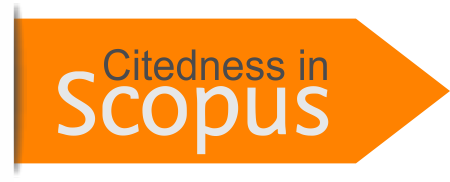The Selection of Learning Platforms to Support Learning Using Fuzzy Multiple Attribute Decision Making
Abstract
The utilization of information technology in learning has functioned as a tool in the teaching and learning process during the Covid-19 pandemic. The need for the availability of a learning platform using LMS (Learning Management System) or free e-learning that is easily obtained from the public network (internet) makes the utilization of the learning platform indispensable for the teaching and learning process. Learning platforms available on the internet can also be used independently by students. However, not all existing learning platforms can be used as the appropriate means to improve the quality of education. The educator policies are needed to utilize the existing learning platforms so that learning objectives can be achieved. This study will analyze how to choose the right learning platform for an educational institution using SAW (Simple Additive Weighting)-based Fuzzy Multiple Attribute Decision Making (FMADM) method. FMADM is a method used to find the optimal alternative from a number of alternatives with certain criteria. The purpose of this study is to assist educators in deciding the most appropriate learning platform that can be used to support the teaching and learning process during the Covid 19 pandemic.
Full Text:
PDFReferences
Cubukcuoglu, B. (2013). Factors enabling the use of technology in subject teaching. International Journal of Education and Development Using ICT, 9(3).
Chou, S. Y., Chang, Y. H., & Shen, C. Y. (2008). A fuzzy simple additive weighting system under group decision-making for facility location selection with objective/subjective attributes. European Journal of Operational Research, 189(1), 132-145.
Favale, T., Soro, F., Trevisan, M., Drago, I., & Mellia, M. (2020). Campus traffic and e-Learning during COVID-19 pandemic. Computer networks, 176, 107290.
Hien, N. T. N., & Haddawy, P. (2007, October). A decision support system for evaluating international student applications. In 2007 37th annual frontiers in education conference-global engineering: knowledge without borders, opportunities without passports (pp. F2A-1). IEEE.
Kusumadewi, S., Hartati, S., Harjoko, A., & Wardoyo, R. (2006). Fuzzy multi-attribute decision making (fuzzy madm). Yogyakarta: Graha Ilmu, 78-79.
Lai, M., Lim, C. P., & Wang, L. (2016). Potential of digital teaching portfolios for establishing a professional learning community in higher education. Australasian Journal of Educational Technology, 32(2).
Li, J., Qin, C., & Zhu, Y. (2021). Online teaching in universities during the Covid-19 epidemic: a study of the situation, effectiveness and countermeasures. Procedia Computer Science, 187, 566-573.
Magdin, M., & Turcáni, M. (2016). Modeling Behavior of Students in E-Learning Courses on the Basis of Use Interactive Animations. Turkish Online Journal of Educational Technology-TOJET, 15(1), 62-68.
Memariani, A., Amini, A., & Alinezhad, A. (2009). Sensitivity analysis of simple additive weighting method (SAW): the results of change in the weight of one attribute on the final ranking of alternatives.
Setyani, R. E., & Saputra, R. (2016). Flood-prone areas mapping at Semarang City by using simple additive weighting method. Procedia-Social and Behavioral Sciences, 227, 378-386.
Shin, N., & Chan, J. K. (2004). Direct and indirect effects of online learning on distance education. British Journal of Educational Technology, 35(3), 275-288.
Siswanto, R., Sugiono, S., & Prasojo, L. D. (2018). The Development of Management Model Program of Vocational School Teacher Partnership with Business World and Industry Word (DUDI). Jurnal Ilmiah Peuradeun, 6(3), 365-384.
Tarik, A., Aissa, H., & Yousef, F. (2021). Artificial intelligence and machine learning to predict student performance during the COVID-19. Procedia Computer Science, 184, 835-840.
Vydia, V., Kom, M., Kom, S. M. K. S. M., & Handayani, S. (2021, December). The Selection of Learning Platforms to Support Learning Using FMADM. In International Conference on Global Optimization and Its Applications 2021 (Vol. 1, No. 1, pp. 137-137).
Zeng, L. (2006). Expected value method for fuzzy multiple attribute decision making. Tsinghua Science & Technology, 11(1), 102-106.
DOI: https://doi.org/10.46336/ijqrm.v3i1.257
Refbacks
- There are currently no refbacks.
Copyright (c) 2022 Vensy Vydia, Susanto Susanto, Sri Handayani, Maulana Bahrul Alam

This work is licensed under a Creative Commons Attribution 4.0 International License.
Published By:
IJQRM: Jalan Riung Ampuh No. 3, Riung Bandung, Kota Bandung 40295, Jawa Barat, Indonesia
IJQRM Indexed By:
 Creation is distributed below Lisensi Creative Commons Atribusi 4.0 Internasional.
Creation is distributed below Lisensi Creative Commons Atribusi 4.0 Internasional.








